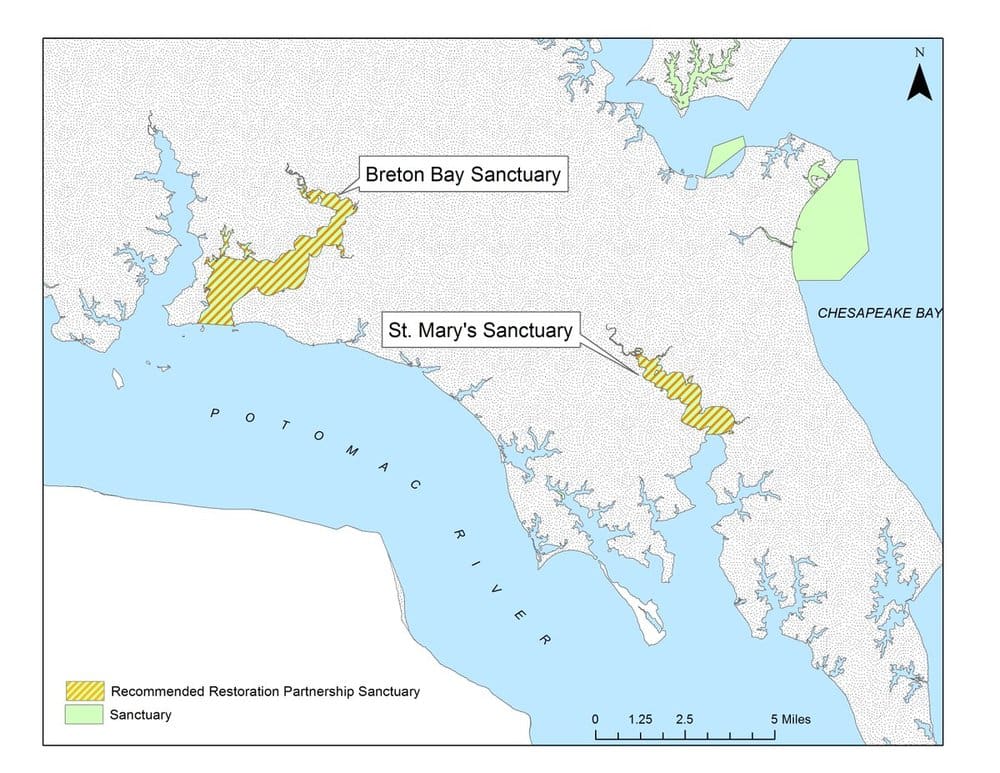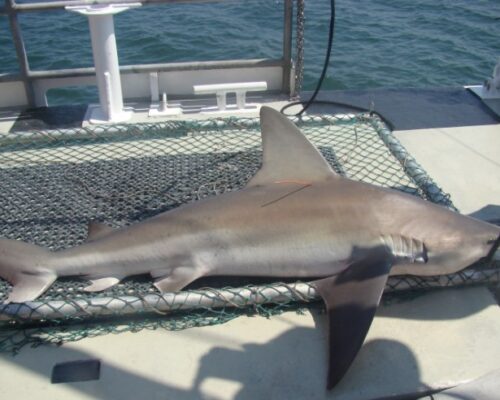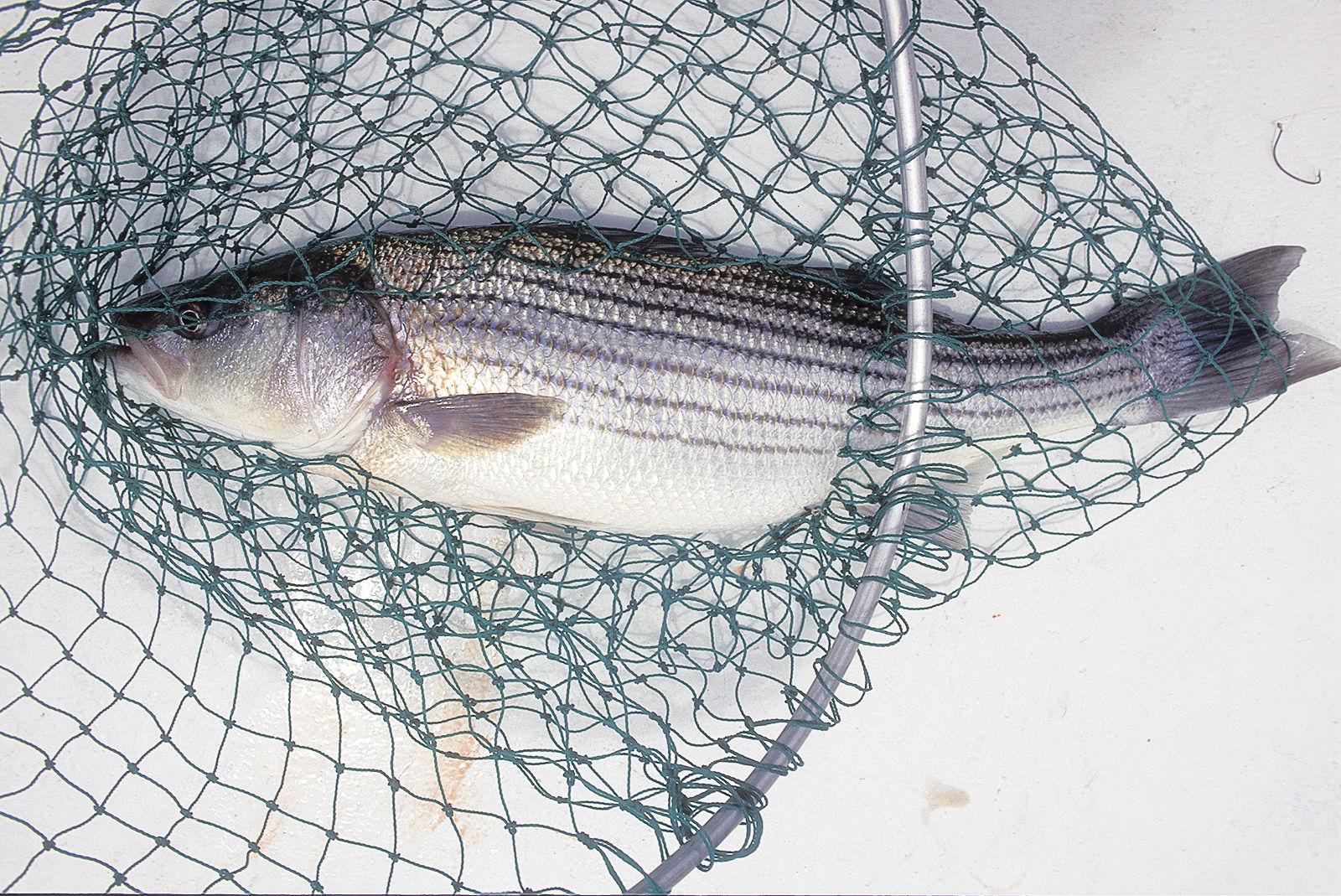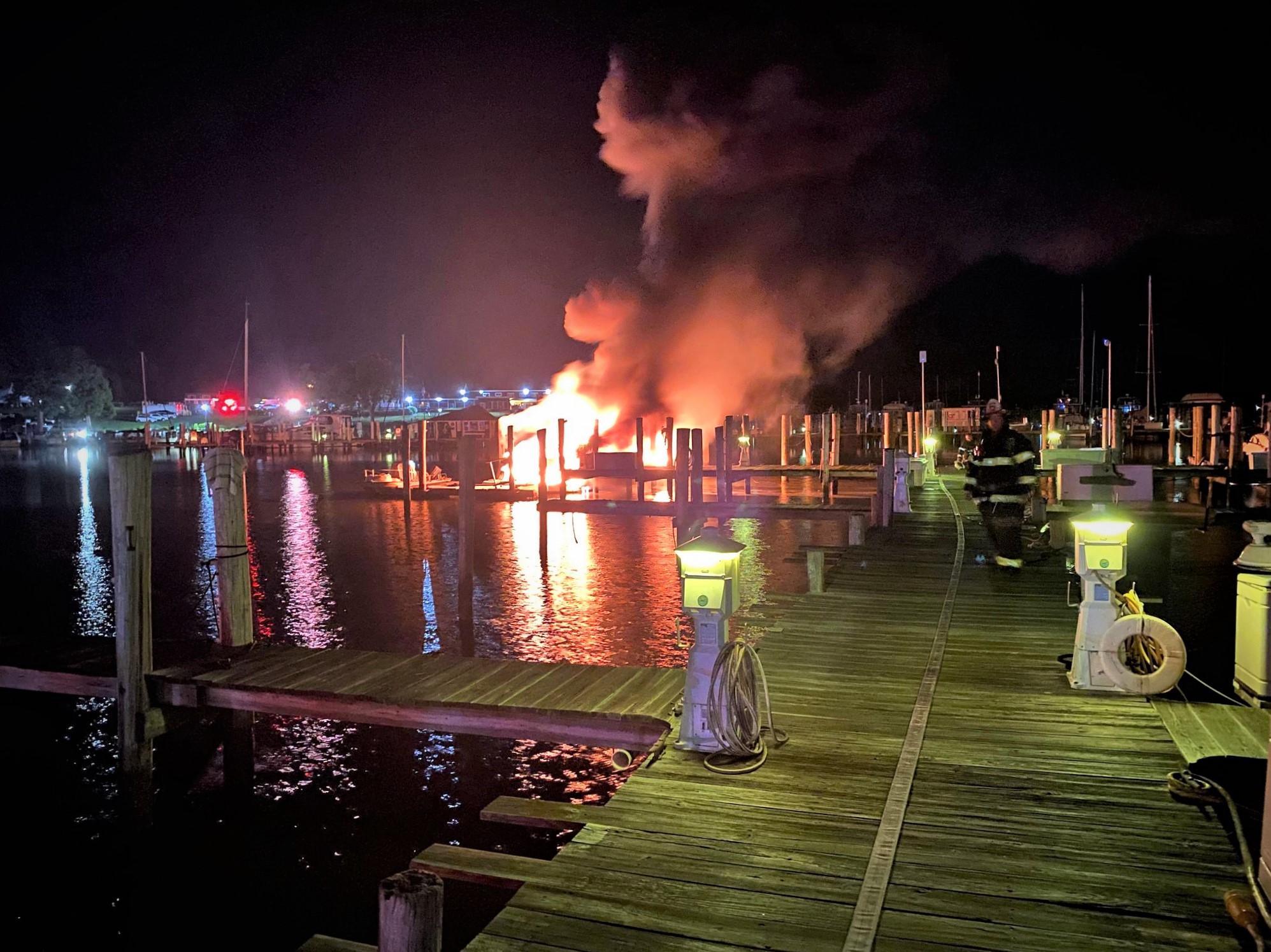The Maryland Department of Natural Resources (DNR) has announced the final two locations targeted for oyster restoration. It’s news that has some people on the Bay celebrating— but others are questioning the state’s priorities.
DNR plans to recommend Breton Bay and the upper St. Mary’s River as the state’s fourth and fifth tributaries to satisfy the Chesapeake Bay Watershed goal of restoring native oyster populations in five tributaries by 2025.
There are already large-scale oyster restoration actions underway in Harris Creek, the Little Choptank River, and the Tred Avon River.
The new plan was developed with feedback from the Oyster Advisory Commission, which includes academics, conservationists, legislators and watermen.
DNR will seek public comment as well as consultation with the Maryland Oyster Restoration Interagency Workgroup, which includes NOAA and the U.S. Army Corps of Engineers. The state would manage the upper St. Mary’s River restoration, while the state’s federal partners would help with the Breton Bay project.
“These restoration recommendations strike the right balance between the environment and the economy by concentrating limited yet targeted resources on existing sanctuaries with the most potential for success, based on the best available science,” Belton said. “These two sites have the broad support of environmentalists and riverkeepers as well as county leaders and watermen.”
Some expressed disappointment that the recommended locations don’t reach the Lower Bay, or include the Annapolis area. But DNR says it intends to design and develop oyster management plans for the Manokin, Nanticoke and Severn Rivers for potential future investments.
The Chesapeake Bay Foundation, for its part, is happy with one location choice, but disagrees with the other target.
“We are pleased after months of uncertainty about whether large scale restoration would continue in Maryland to see today’s announcement. St. Mary’s River meets the state’s criteria as a good place to focus more restoration work, but Breton Bay does not. The state said tributaries should be selected that have the greatest chance of restoring dense oyster populations with minimal investment,” said Alison Prost, Maryland Executive Director of the Chesapeake Bay Foundation (CBF), in a statement.
Prost continues, “Breton Bay is a low-salinity area with a history of low oyster reproduction. It likely will be difficult and expensive to achieve successful restoration in Breton Bay. DNR has acknowledged these deficiencies so we hope there will be further discussion with stakeholders as to why this area was selected despite not meeting the criteria DNR provided to the Oyster Advisory Commission.”




